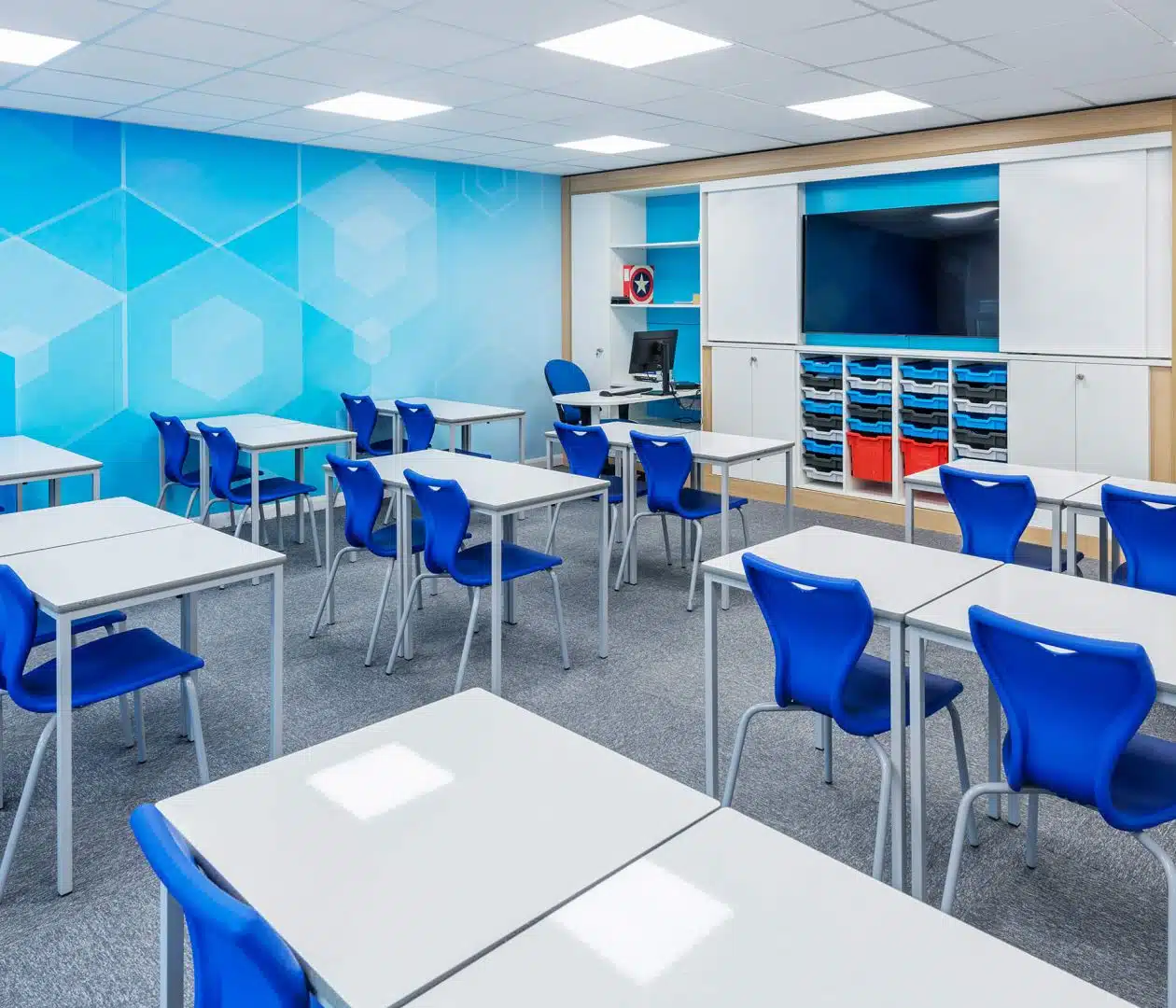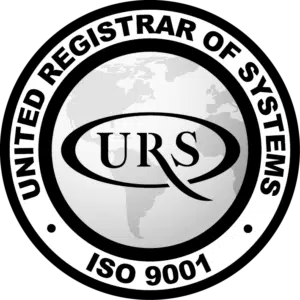A Guide to Inspiring School Renovation Mood Boards
Apr 5, 2024 • 6 minutes

Are you ready to transform your school’s classrooms into vibrant, inspiring spaces that spark creativity and learning? The classroom designers at Westcountry Group understand the significance of creating an inspirational space, that enhances learning, health and wellbeing. In this blog, we’ll discuss the importance of mood boards as a tool for visualising and planning renovations, offering valuable insights and tips to help you craft compelling and effective mood boards for your next project.
Understanding the project requirements
Understanding the project requirements is essential when creating inspiring mood boards for school interior design and renovation projects. Begin by analysing the specific needs of the school, such as accommodating different age groups, functional spaces, and implementing safety measures. Consider the school’s branding, colour schemes, and overall aesthetic to ensure that the mood boards align with its identity and vision. Additionally, take into account any special requirements such as accessibility, multipurpose spaces, or environmentally friendly design elements.
By understanding the project requirements in detail, designers can ensure that their mood boards effectively address the practical and aesthetic needs of the school. This may involve consulting with educators, administrators, and students to gain insights into how the space will be used and what elements are most important to them. By incorporating these diverse perspectives into the mood boards, designers can create spaces that not only look visually appealing, but also serve their intended functions for fostering learning and creativity. Understanding these unique project requirements sets a solid foundation for crafting mood boards that inspire project managers and ultimately transform the environment.
Gathering inspiration and ideas
When it comes to creating mood boards, drawing inspiration from other local schools provides the opportunity to experience different aesthetic choices, functional layouts, and creative use of space first-hand.
Examining neighbouring schools’ designs helps in understanding how to strike a balance between maintaining consistency with educational standards while infusing unique elements that reflect the institution’s identity. This approach allows the school’s project managers to explore ideas that have been tested within a similar context, facilitating a more informed decision-making process. It also encourages collaboration among educational institutions by fostering an exchange of ideas and best practices for enhancing learning environments.
It’s also worth looking further afield. The focus on creating welcoming, stimulating, and functional learning environments in Scandinavian schools, for example, provides an excellent source of inspiration. From flexible classroom layouts to incorporating natural elements and sustainable materials, Scandinavian schools offer a fresh perspective on how interior design can positively impact the education experience.
One particularly inspiring school is Glömstaskolan, just south of Stockholm. They completely reimagined their space; the school has no corridors and individual toilets are built into classrooms, along with narrow staircases and plenty of glass windows.
Students have access to a green room for film-making, 3D printers, and an outdoor concrete jungle. The school’s motto ‘I want it to be good for you and I will do what makes you good’ is reflected in its design. It aims to foster social connections among students and teachers as well as promoting collaboration, creativity, critical thinking, and communication. Class sizes can vary depending on the activity, with one teacher leading and others providing support based on their skills or social input to create a positive learning experience for every student.
Selecting the right visuals and materials
Selecting the right visuals can inspire creativity and motivation among students by incorporating vibrant colours, engaging patterns, and stimulating imagery. Materials such as sustainable wood, eco-friendly paint, and innovative technology can offer a modern yet environmentally conscious approach. By carefully curating these elements into mood boards, schools can create inspiring spaces that promote learning and growth.
Selecting visuals that represent diversity and inclusivity is essential for fostering an environment where all students feel valued and represented. Incorporating images of diverse cultures, abilities, and backgrounds can instil a sense of community within the environment. Additionally, using materials that are accessible to all students, such as adjustable furniture or sensory-friendly textures, promotes an inclusive atmosphere that caters to diverse learning needs.
Assembling the mood board
With Adobe InDesign, and Photoshop at our fingertips, we have the ability to craft visually stunning representations of your vision. These graphic design software tools enable us to seamlessly blend colours, textures, and typography, creating mood boards that speak volumes about the atmosphere we aim to achieve in each renovated space. By utilising these sophisticated programs, we can unlock endless creative possibilities and ensure that every aspect of the school transformation is carefully considered and meticulously planned.
In addition to professional design software, Canva serves as a user-friendly alternative for crafting mood boards with its array of customisable templates. Whether it’s exploring colour palettes or experimenting with layout arrangements, Canva’s intuitive interface simplifies the process while still delivering impactful results. Pinterest also acts as a wellspring of inspiration for gathering ideas and trends that resonate with our vision for renovation. With an abundance of imagery and themes at our disposal, Pinterest empowers us to curate cohesive visual narratives that will guide us throughout the entire revitalisation journey.
Presenting and communicating your vision
Communicating your vision through a mood board can be a powerful tool when working with a school interior design company like Westcountry Group. By curating images, colours, textures, and other visual elements that represent your ideal learning environment, you can effectively convey the atmosphere and aesthetic you envision for the space. This not only helps us to understand your unique preferences but also serves as a creative catalyst for brainstorming and idea generation.
Utilising a mood board allows you to communicate nuances of your vision that might be challenging to express through words alone. Whether it’s capturing the essence of a nurturing and stimulating classroom or showcasing modern yet functional communal areas, the intricacies of your ideas can come to life on a well-crafted mood board. Additionally, by including elements such as material samples or architectural inspirations alongside imagery, you provide practical insights into materials and features that resonate with your vision – ultimately enhancing collaboration and mutual understanding between you and the design team.
Benefits of an effective mood board
The benefits of effective mood boards in inspiring school renovation projects are clear. From helping to visualise and communicate ideas, to fostering collaboration and ensuring a cohesive aesthetic, mood boards play a crucial role in the success of any renovation project. As you compile your vision for your school’s transformation, consider the power of an impactful mood board to guide and inspire your design process.
If you’re ready to take the next step or need assistance in bringing your vision to life, contact Westcountry Group today to find out more — call 0330 030 0330 to discuss your project with our educational interior design team, email: sales@westcountrygroup.com or visit https://www.westcountrygroup.com/education
Let us help you transform your environment into inspirational spaces that optimise learning and enhance student performance.






